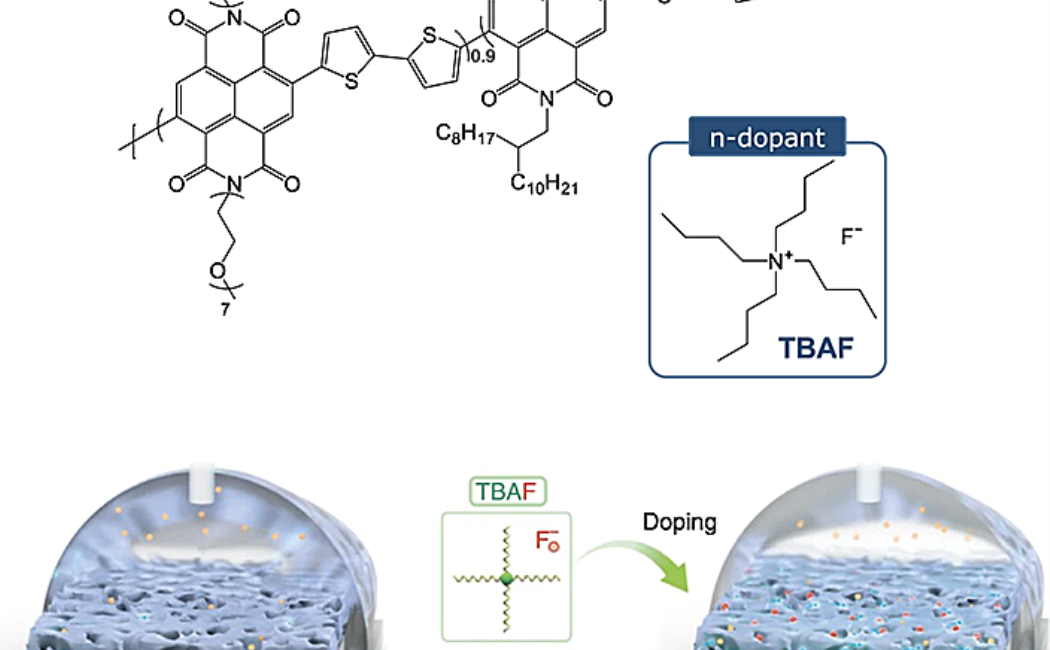
20 June, 2021
Water stable molecular n-doping produces organic electrochemical transistors with high transconductance and record stability
Abstract
From established to emergent technologies, doping plays a crucial role in all semiconducting devices. Doping could, theoretically, be an excellent technique for improving repressively low transconductances in n-type organic electrochemical transistors – critical for advancing logic circuits for bioelectronic and neuromorphic technologies. However, the technical challenge is extreme: n-doped polymers are unstable in electrochemical transistor operating environments, air and water (electrolyte). Here, the first demonstration of doping in electron transporting organic electrochemical transistors is reported. The ammonium salt tetra-n-butylammonium fluoride is simply admixed with the conjugated polymer poly(N,N’-bis(7-glycol)-naphthalene-1,4,5,8-bis(dicarboximide)-co-2,2’-bithiophene-co-N,N’-bis(2-octyldodecyl)-naphthalene-1,4,5,8-bis(dicarboximide), and found to act as a simultaneous molecular dopant and morphology-additive. The combined effects enhance the n-type transconductance with improved channel capacitance and mobility. Furthermore, operational and shelf-life stability measurements showcase the first example of water-stable n-doping in a polymer. Overall, the results set a precedent for doping/additives to impact organic electrochemical transistors as powerfully as they have in other semiconducting devices.